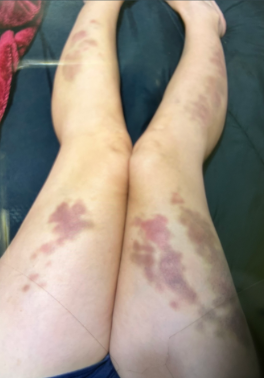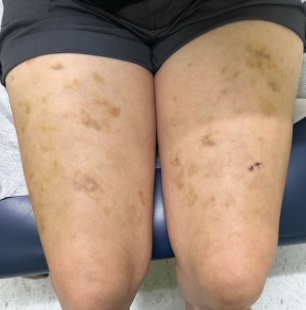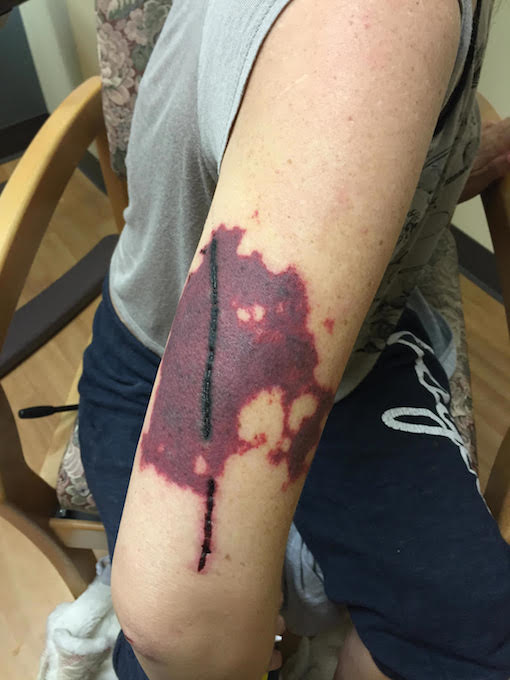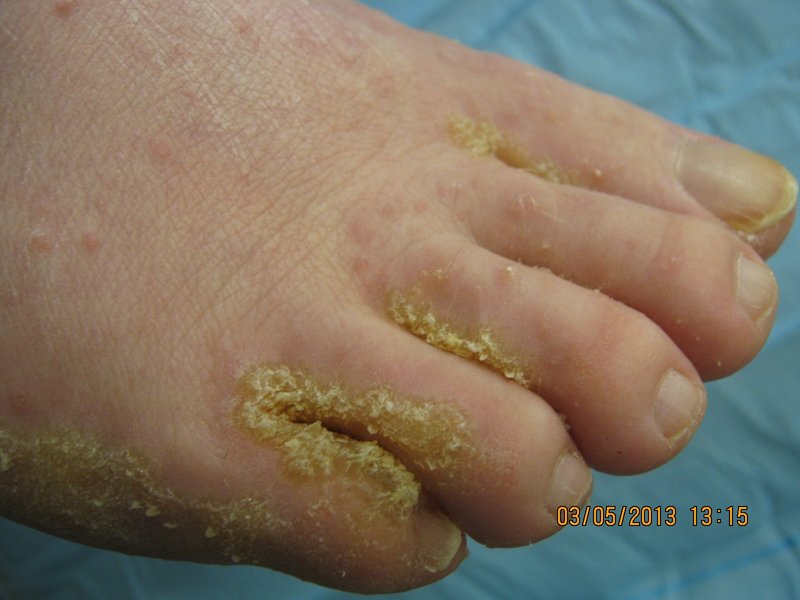Presenter: Valeria González-Molina, MD, Thomas L Davis, MD, Rick Lin, DO
Dermatology Program: South Texas Dermatology Residency, HCA Healthcare Corpus Christi Medical Center – Bay Area Program
Program Director: Rick Lin, DO MPH FAOCD
Submitted on: September 20, 2023
CHIEF COMPLAINT: “I’ve been noticing random bruises appearing on my body “
CLINICAL HISTORY: A 30-year-old Latin American female with a medical history of anxiety, hypotension, hypothyroidism, fibromyalgia, and arrhythmias presented to our clinic with episodic spontaneous bruising on both thighs, which had been occurring since February 2022. She reported pain upon palpation but did not have any other systemic symptoms. The patient denied any new medications or recent traumatic events. Her only surgical history included the placement of a cardiac loop recorder two years prior. She had no history of smoking, alcohol use, or illicit drug use. She denied any family history of bleeding or thrombotic disorders, skin cancer, or liver disease. Current medications included midodrine, fludrocortisone, levothyroxine, and diclofenac, and there were no known drug allergies.
PHYSICAL EXAM:
Physical examination revealed painful, non-palpable and ecchymotic healing lesions over the anterior aspect of both thighs.
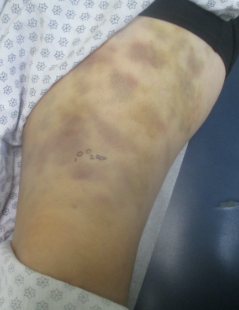
LABORATORY TESTS:
A thorough evaluation of the patient’s coagulation pathway and platelet function was conducted, yielding negative results. The complete blood count (CBC) was within normal limits, and tests for autoimmune disorders and cancer screening also returned negative.
DERMATOHISTOPATHOLOGY:
Two 4 mm punch biopsies were performed on the left thigh. Hematoxylin and eosin staining revealed features consistent with no epidermal changes, edema in the upper dermis, minimal perivascular mononuclear infiltrate, and extravasated red blood cells in the upper dermis. Direct immunofluorescence (DIF) testing was negative.
DIFFERENTIAL DIAGNOSIS:
-
- Traumatic purpura (self-induced or domestic violence)
- Drug-induced Purpura (NSAIDs, heparin, warfarin, or steroid atrophy)
- Coagulation Defect (Vit K deficiency, hepatic disease, hemophilia)
- Platelet Disorder
- Ehler-Danlos Syndrome
- Waldenstrom Macroglobulinemia
- Pigmented Purpura
- Urticarial Vasculitis
- Cryoglobulinemia
- Systemic Amyloidosis

